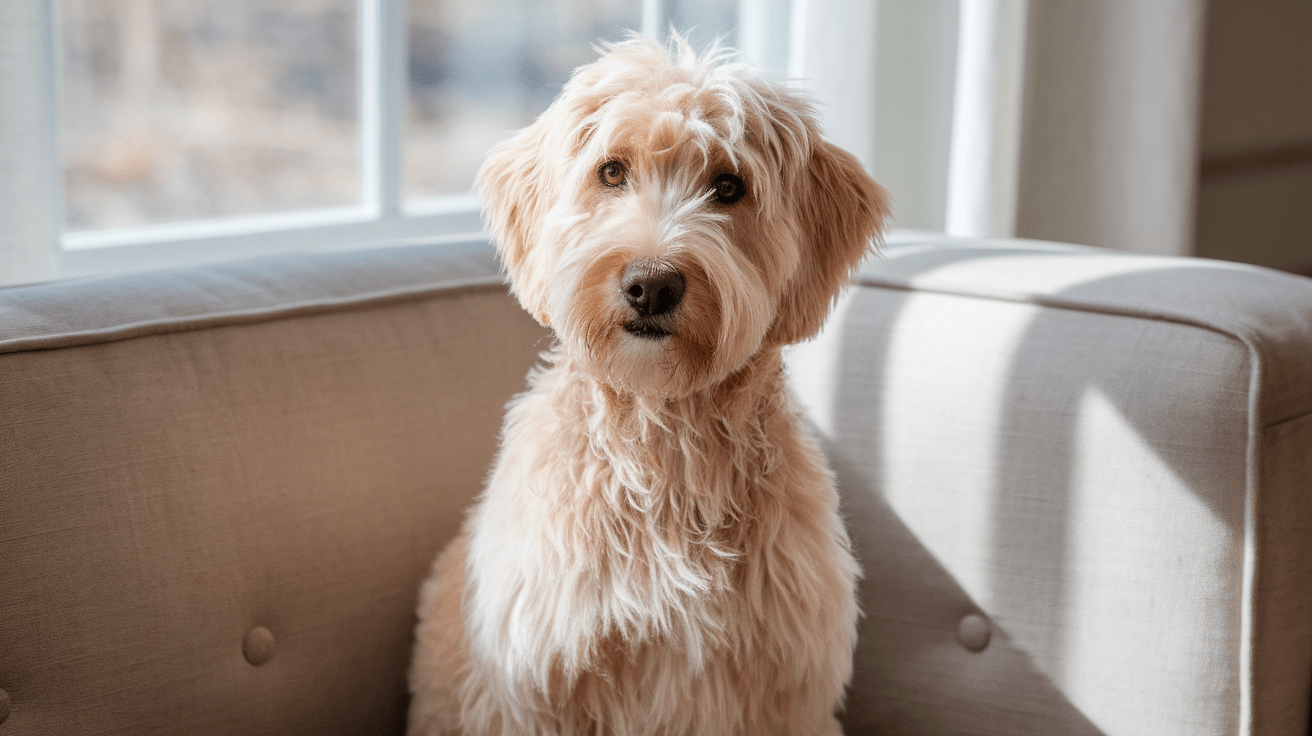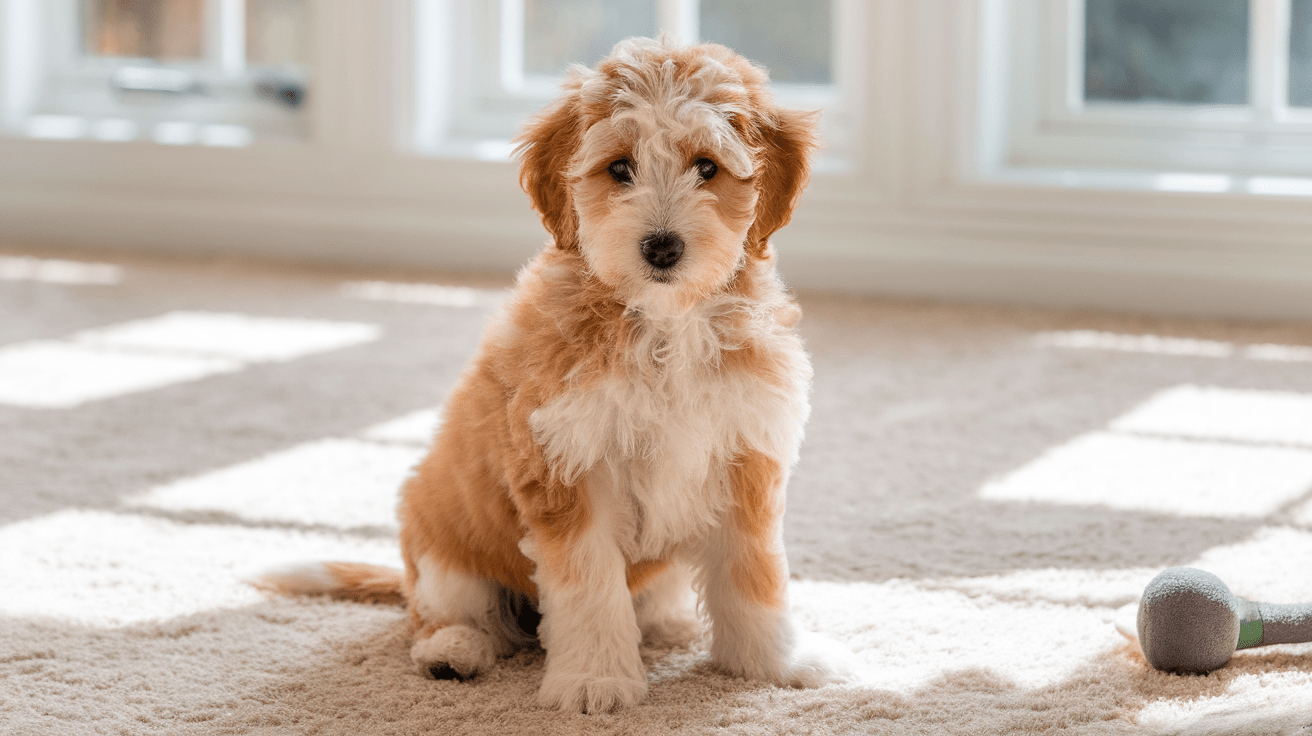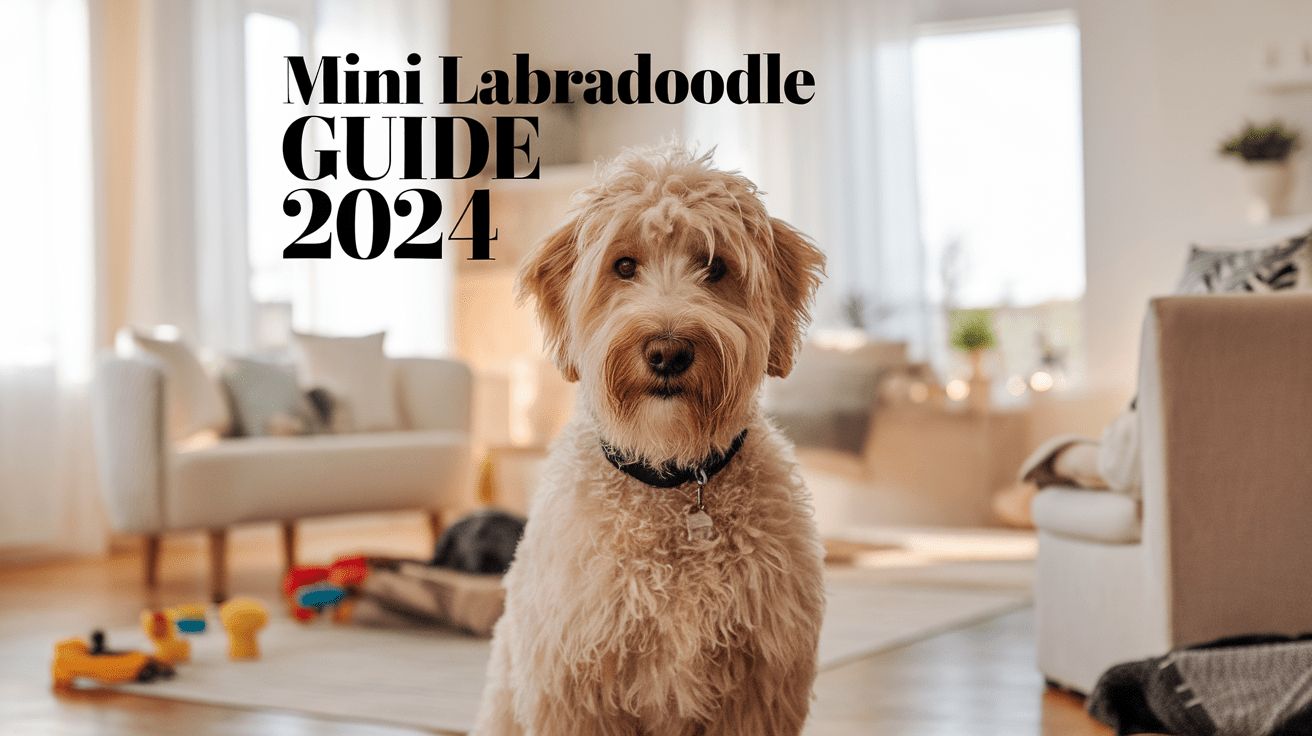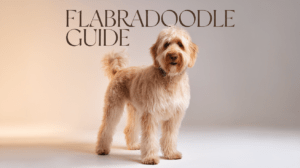Miniature Labradoodle Key Takeaways
- ✓ Size and Build: Mini Labradoodles stand 14-16 inches tall and weigh 15-25 pounds, making them ideal for both apartments and houses.
- ✓ Temperament: These dogs are friendly, intelligent, and highly adaptable, combining the best traits of Labs and Poodles.
- ✓ Care Requirements: Need 30-45 minutes of daily exercise and regular grooming every 6-8 weeks to maintain their coat.
- ✓ Health: Generally healthy with a 12-14 year life expectancy, but may inherit health issues from both parent breeds.
- ✓ Cost and Commitment: Expect to invest $2,000-$4,000 initially, plus ongoing costs for grooming, healthcare, and maintenance.
Looking for a perfect family companion that combines intelligence, charm, and a manageable size? The Miniature Labradoodle might be your answer! As a veterinarian who’s treated countless doodles over the past decade, I can tell you these adorable hybrids are more than just cute faces. According to the American Kennel Club, doodle breeds have seen a remarkable 300% increase in popularity since 2010, and it’s easy to see why.
These pint-sized pooches inherit the best traits from their Labrador Retriever and Miniature Poodle parents – think Lab loyalty with Poodle smarts, wrapped in a smaller, often hypoallergenic package. Whether you’re living in a cozy apartment or managing an active household, these adaptable furballs might be the perfect fit. But before you fall head over heels for those puppy-dog eyes, let’s dig into everything you need to know about these delightful designer dogs.
What is a Miniature Labradoodle?

A Miniature Labradoodle is a thoughtfully designed crossbreed that combines the gentle nature of a Labrador Retriever with the compact size and intelligence of a Miniature Poodle. In my veterinary practice, I’ve observed that these dogs typically stand between 14-16 inches tall and weigh 15-25 pounds – making them the perfect “goldilocks” size for many families.
Think of them as the smartphone version of a standard Labradoodle – all the same fantastic features, just in a more portable package! What makes these dogs truly special is their incredible versatility. During my years of practice, I’ve seen Mini Labradoodles excel as therapy dogs, family companions, and even as assistance dogs for people with allergies. According to the Petfinder’s Breed Guide, approximately 75% of Miniature Labradoodles inherit the Poodle’s low-shedding coat, making them a popular choice for allergy sufferers.
One of my most memorable patients was a Mini Labradoodle named Charlie who helped his young owner overcome a fear of dogs. Their story perfectly illustrates these dogs’ gentle nature and intuitive understanding of human emotions. The breed’s adaptability and intelligence make them equally comfortable in a city apartment or suburban home, provided they receive adequate exercise and mental stimulation.
However, it’s important to note that as a hybrid breed, Mini Labradoodles can vary significantly in appearance and temperament. Just like human siblings can inherit different traits from their parents, each puppy might display unique characteristics. This variability is part of what makes them special, but it also means potential owners should understand what they’re signing up for.
Size, Weight, and Physical Characteristics
Mini Labradoodles typically exhibit these physical traits:
• Height: 14-16 inches at the shoulder
• Weight: 15-25 pounds
• Coat types: Wavy, curly, or straight
• Colors: Cream, chocolate, black, or apricot
Different Types of Mini Labradoodles
In my practice, I commonly see three generations of Mini Labradoodles:
• F1 (First generation): Direct Lab and Miniature Poodle cross
• F1B: F1 Labradoodle bred back to a Miniature Poodle
• Multi-gen: Third generation and beyond
Genetic Makeup and Breed History
The Mini Labradoodle’s story began in the late 20th century, following the success of the standard Labradoodle. While their larger cousins were initially bred as guide dogs, Mini Labradoodles were developed to create a more compact companion dog with the same desirable traits. This thoughtful breeding has resulted in a dog that combines the Labrador’s friendly nature with the Poodle’s intelligence and smaller size.
Living with a Mini Labradoodle

As someone who’s treated hundreds of Mini Labradoodles, I can confidently say these dogs are exceptional family companions. According to the Pawlicy Advisor’s Pet Insurance Statistics, Labradoodles rank among the top 10 breeds for family adaptability, with a 92% positive rating from owners with children.
I’ll never forget treating a Mini Labradoodle named Bella who helped her elderly owner maintain an active lifestyle well into her 80s. These dogs have an incredible ability to adapt their energy levels to match their family’s lifestyle. They’re equally content joining you for a morning jog or cuddling on the couch during movie night.
Temperament and Personality Traits
Mini Labradoodles are known for their friendly and sociable nature. They inherit the Labrador’s people-pleasing personality and the Poodle’s sharp intelligence. Think of them as the “social butterflies” of the dog world – they’ll make friends with everyone from your mailman to your grandmother! However, this sociability means they can develop separation anxiety if left alone for long periods.
Exercise and Activity Requirements
These energetic pups need about 30-45 minutes of daily exercise, split into two sessions. Their exercise needs are like a rechargeable battery – they need regular “recharging” through activity to maintain their happy, balanced demeanor. I recommend:
• Daily walks or jogs
• Interactive play sessions
• Mental stimulation through puzzle toys
• Swimming (they often inherit the Lab’s love for water)
Grooming and Maintenance Needs
While Mini Labradoodles are often marketed as “low-maintenance,” they do require regular grooming. Their coat is like a garden – neglect it, and it quickly becomes overwhelming! Plan for:
• Brushing 2-3 times per week
• Professional grooming every 6-8 weeks
• Regular nail trimming and ear cleaning
Common Health Issues and Life Expectancy
These hardy dogs typically live 12-14 years. As a hybrid breed, they can inherit health concerns from both parent breeds. In my practice, I commonly monitor for:
• Hip dysplasia
• Eye problems
• Ear infections (especially in swimming enthusiasts)
• Allergies
Regular veterinary check-ups and preventive care are essential for maintaining their health. Remember, investing in your Mini Labradoodle’s health early on can save both heartache and expenses in the long run.
Getting a Miniature Labradoodle

As a veterinarian who’s guided countless families through the journey of choosing their perfect pet, I can tell you that getting a Mini Labradoodle requires careful consideration and research. According to the GoodDog Breed Health Standards, only about 30% of Labradoodle breeders meet all recommended health testing requirements, making it crucial to choose your breeder wisely.
I remember helping a family who’d been scammed by an unethical breeder – a heartbreaking situation that could have been avoided with proper research. That’s why I always emphasize the importance of doing your homework before bringing home your furry family member.
Cost and Where to Find Reputable Breeders
Mini Labradoodles typically cost between $2,000-$4,000 from reputable breeders. Think of this investment like buying a quality appliance – paying more upfront often saves money in the long run. Look for breeders who:
• Provide health clearances for both parent dogs
• Allow visits to their facility
• Have a clear puppy contract
• Offer post-adoption support
• Ask you questions about your lifestyle and experience
Training and Socialization Tips
Mini Labradoodles are like sponges – they absorb training quickly but can also soak up bad habits if not properly guided. Start early with:
• Basic obedience training from 8 weeks
• Positive reinforcement methods
• Socialization with different people and environments
• Crate training for house breaking
Is a Mini Labradoodle Right for You?
Before committing to a Mini Labradoodle, consider your lifestyle honestly. These dogs thrive in homes where they can receive:
• Regular exercise and mental stimulation
• Consistent grooming maintenance
• Family time and attention
• Training commitment
Mini Labradoodle vs. Other Doodle Breeds
While all doodle breeds share some characteristics, Mini Labradoodles stand out for their balanced temperament. They’re generally more laid-back than Goldendoodles but more outgoing than Schnoodles. The best way to think about it is that Mini Labradoodles are like the “just right” porridge in Goldilocks – not too energetic, not too reserved.
Remember, choosing a Mini Labradoodle means committing to a 12-14 year relationship. Take your time, ask questions, and ensure you’re ready for the responsibility of this wonderful companion. The joy they bring is worth every minute of careful preparation!
Frequently Asked Questions About Miniature Labradoodles
Conclusion
The Miniature Labradoodle represents an exceptional blend of intelligence, adaptability, and companionship in a perfectly-sized package. As a veterinarian, I’ve witnessed countless success stories where these remarkable dogs have transformed families’ lives through their gentle nature and intuitive understanding. While they require dedicated grooming, regular exercise, and consistent training, the rewards of owning a Mini Labradoodle far outweigh these commitments. Their versatile temperament and loving disposition make them ideal for various living situations, from city apartments to suburban homes. If you’re prepared for the responsibility and joy of raising one of these wonderful companions, a Mini Labradoodle might just be the perfect addition to your family. Remember, proper research and preparation are key to ensuring a successful, lifelong bond with your new furry friend.
While this guide focuses on Mini Labradoodles, you might want to explore all Labradoodle varieties to make an informed decision. Our comprehensive Ultimate Complete Guide to Labradoodles dives deep into everything from size variations to health considerations across all Labradoodle types. This expert-backed resource offers valuable insights that can help you understand the broader Labradoodle family and make the best choice for your specific situation.




